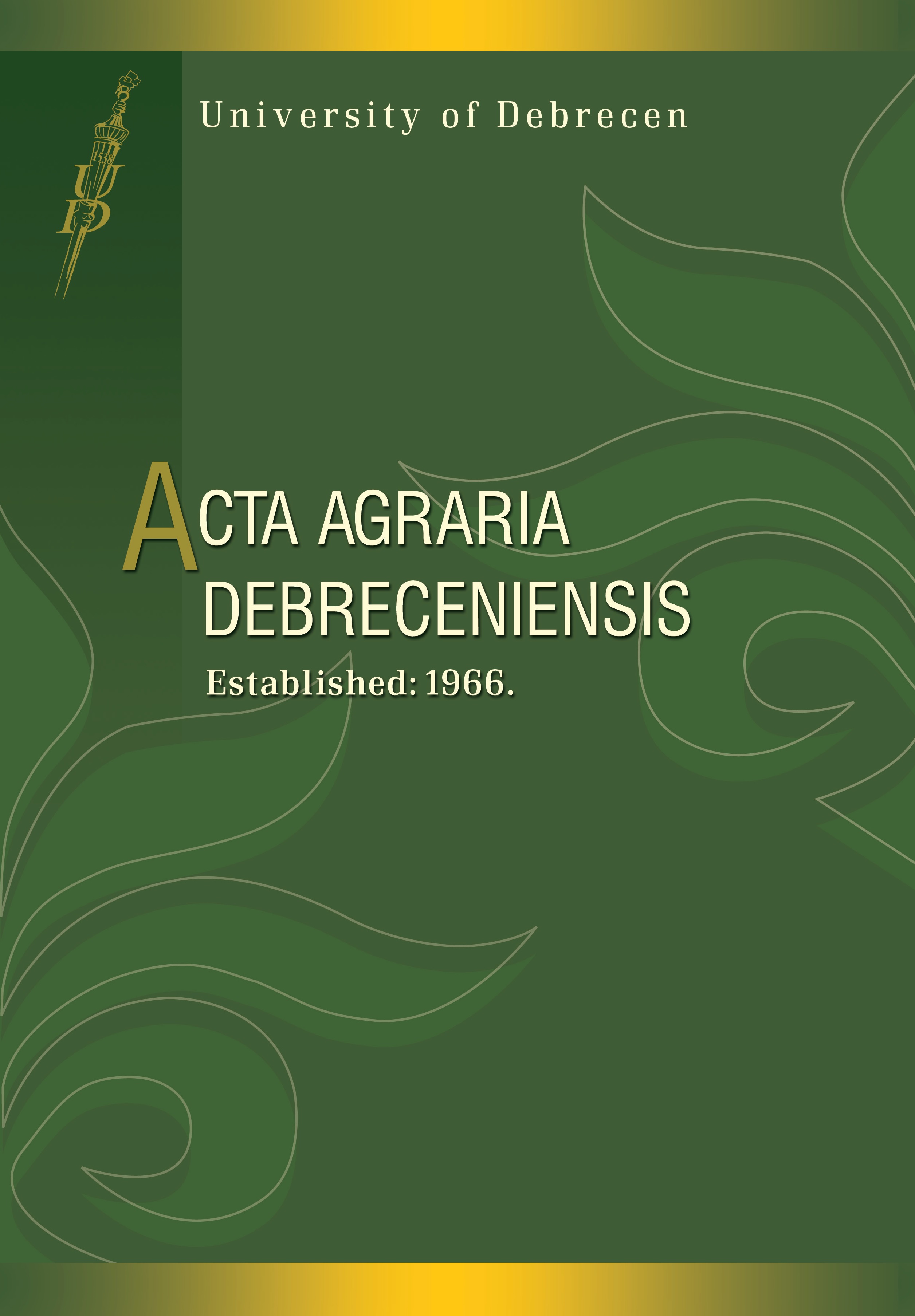Articles
The effect of sulphur and nitrogen supply on the growth and nutrient content of spring wheat (Triticum aestivum L.)
Published:
2018-06-30
Authors
View
Keywords
How To Cite
Selected Style:
APA
Juhász, E. K., & Balláné Kovács, A. (2018). The effect of sulphur and nitrogen supply on the growth and nutrient content of spring wheat (Triticum aestivum L.). Acta Agraria Debreceniensis, 74, 65-70. https://doi.org/10.34101/actaagrar/74/1666
Abstract
Sulphur is an essential element for plants. Decreasing sulphur deposition from the air, and the use of more concentrated phosphate fertilizers, which contain no sulphur, has led to reports of sulphur deficiencies for wheat. Sulphur deficiency significantly affects yield and also the quality of wheat. The pot experiment was set up on calcareous chernozem soil at Látókép, Hungary, test plant was spring wheat (Triticum aestivum L). Seven treatments were used where nitrogen and sulphur were supplied as soil fertilizers in increasing rates (NS1, NS2, NS3) and in foliar fertilizer as well (NS1+fol., NS2+fol., NS3+fol.). Plant aboveground biomass production was determined in samples taken in the stages of development BBCH 29-30, 51-59, 61-69, 89. The nitrogen and sulphur content of straw and grain were measured. N/S ratios of grain and straw were calculated. The weights of grain were ranging between 8.6–16.1 g/pot. NS2 and NS2+fol. treatments produced the highest values. Foliar fertilizer had no further effect on grain. Analysing the values of the straw, it was observed that tendencies were similar to values of grain. The NS2 treatment produced the highest weight of straw and the NS3 rate already decreased that amount. The obtained results show the unfavourable effect of excessively high rate applied in NS3 treatment. The supplementary foliar fertilizer had no significant influence on the weight of straw. Both N and S-uptake of plant was very intensive at the stem elongation stage, then the N and S-content of plant continuously decreased in time in all treatments. The N-content of grain ranged between 2.215–2.838%.
The N-content of grain slightly increased with increasing of nitrogen doses. In the higher doses (NS2, NS3) foliar fertilization slightly increased the nitrogen content of grain, although this effect was not statistically proved. The N-content of straw varied from 0.361 to 0.605%. The growing dose of soil fertilizer also considerably increased the nitrogen content of straw. Foliar fertilization further increased the nitrogen content of straw. The S-content of grain ranged between 0.174–0.266%. The lowest fertilizer dose (NS1) significantly increased the sulphur content of grain. The further increasing fertilizer doses (NS2, NS3) did not cause additional enhance in sulphur content of grain.
The foliar fertilizer also did not change the sulphur value of plant. The increasing amount of soil fertilizer and the supplementary foliar fertilizer had no effect on the sulphur content of straw. The treatments influenced the N/S ratios of grain and straw. On the basis of experimental results it can be concluded that the examined nitrogen and sulphur containing soil fertilizer had positive effect on the growth and yield of spring wheat grown on the calcareous chernozem soil. The soil fertilizer application enhanced the grain nitrogen and sulphur content. The highest rate of fertilizer (600 kg ha-1) proved to have decreasing effect on the yield. The sulphur and nitrogen containing foliar fertilizer did not have significant effect on the yield parameters but slightly increased the nitrogen content of plant.

 https://doi.org/10.34101/actaagrar/74/1666
https://doi.org/10.34101/actaagrar/74/1666